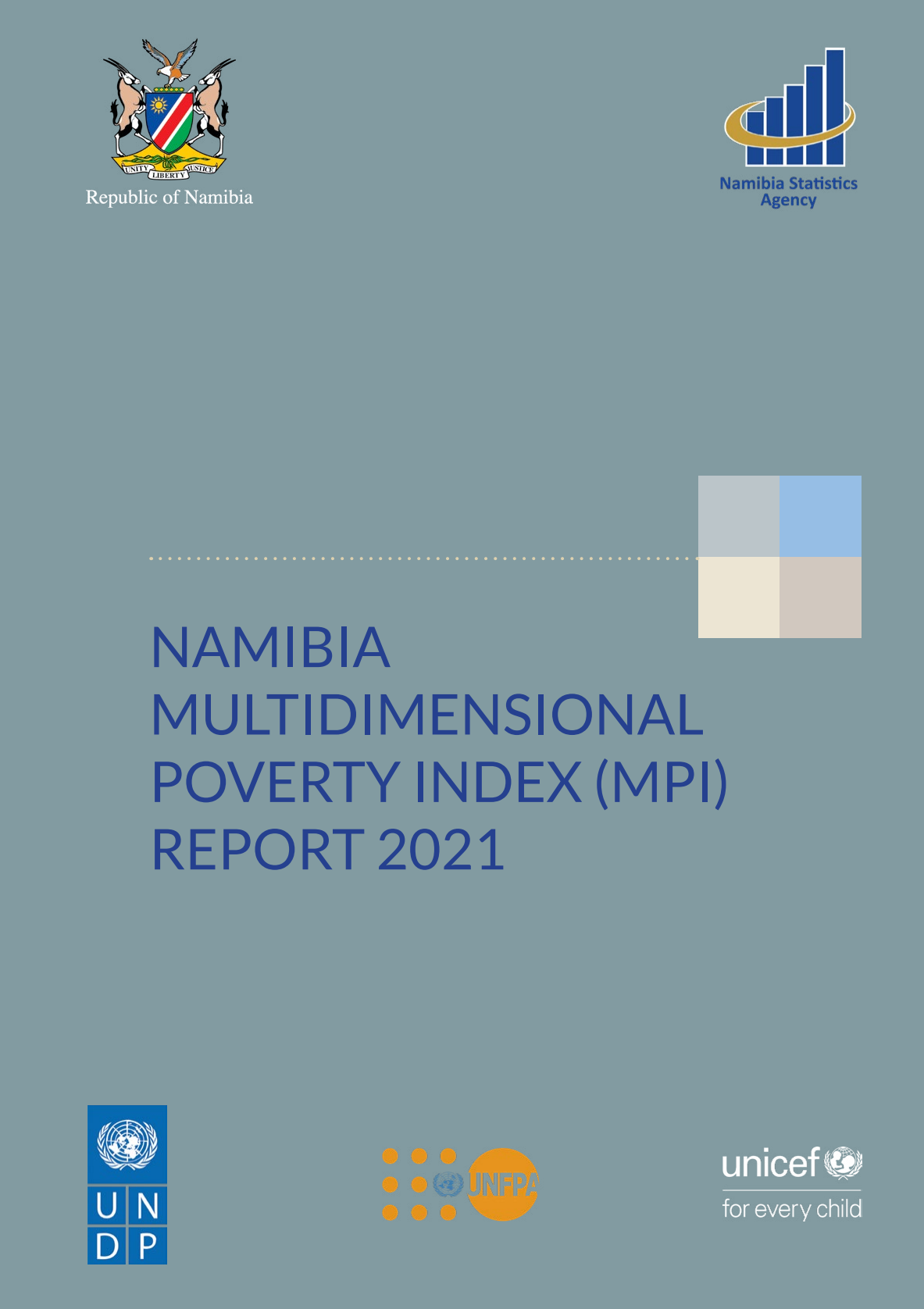Namibia Multidimensional Poverty Index (MPI) Report 2021
National MPI Reports
This report presents the findings of the 2021 Namibian Multidimensional Poverty Index (MPI) which aims to inform and guide poverty reduction strategies in Namibia. The Namibian MPI was developed as part of a collaboration led by the Namibia Statistics Agency (NSA), with UNICEF, UNDP, UNFPA, and OPHI.
This report is based on the Namibian Household Income and Expenditure Survey (NHIES 2015/16). If a person is deprived in 30% of 11 weighted indicators grouped under the three dimensions of ‘Education’, ‘Health’ and ‘Living Standards’, they are considered multidimensionally poor.
Key findings based on 2015/2016 data include:
- More than 43.3 percent of Namibia’s population live in multidimensional poverty.
- The average intensity of poverty is 44.0%, meaning that poor people in Namibia experience, on average, 44.0% of the weighted deprivations.
- The Namibian Multidimensional Poverty Index (MPI), which is the product of incidence and intensity, is 0.191.
- Rural areas were found to be poorer than urban areas, reported at 59.3% and 25.3%, respectively.
- Across the fourteen administrative regions of Namibia, the incidence of multidimensional poverty was highest in Kavango West (79.6 %), Kavango East (70.0 %) and Kunene (64.1 %).
- The incidence of multidimensional poverty is higher among female-headed households (with a rate of 46%), than male-headed households (with a rate of 41%).
- In terms of languages, the highest incidence of multidimensional poverty was reported amongst the population whose main language was Khoisan (93%), followed by Rukavango (68%) and Zambezi (54%). This is in stark contrast to populations whose main spoken languages were English and German (each with 3%).
- The incidence of multidimensional poverty is highest for households that have 16 or more members, at 72.8% compared to 33.4% for a household with less than 6 members.
- The youngest children in Namibia are the poorest with the highest incidence of poverty reported among children aged 1–4 years (56%), followed by 5–9 years (50%) and 10–14 years (48%).
Citation: NSA (2021). Namibia Multidimensional Poverty Index 2021, Namibia Statistics Agency (NSA), Republic of Namibia.
Keywords:
poverty measurement, national MPI, Multidimensional Poverty Index
Region:
Sub-Saharan Africa
Country:
Namibia



